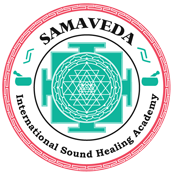How Ecstatic Dance DJs Can Master DJ Controllers – In-Depth Guide to DJ Controllers for Ecstatic Dance Sessions
Discover the comprehensive guide to using DJ controllers for ecstatic dance sessions. Learn how to master DJ controllers and enhance your dance events.
This in-depth guide provides comprehensive information on using DJ controllers for ecstatic dance sessions. It covers the best DJ controllers available, their key features, and tips for mastering their use. The guide explains how DJ controllers can enhance the ecstatic dance experience, offering practical advice for DJs looking to improve their skills and equipment. Whether you are a beginner or an experienced DJ, this guide offers valuable insights into the tools and techniques needed to create dynamic and immersive ecstatic dance sessions.
In-depth Guide for Ecstatic Dance Dj for DJ controllers
What are Different Types of DJ controllers Which Ecstatic Dance Dj Use
- Entry-Level DJ Controllers: Entry-level DJ controllers are designed for beginners or DJs on a budget. They typically have a simplified layout with basic features, making them easy to learn and use. These controllers often include jog wheels, a basic mixer section, a few performance pads, and basic connectivity options. They are ideal for DJs who are just starting out or need a compact and portable option for small gigs or home setups.
- Performance DJ Controllers: Performance DJ controllers are designed for DJs who want more advanced features and capabilities. They typically include larger jog wheels with enhanced sensitivity and accuracy, an expanded mixer section with more control options, and a greater number of performance pads and buttons for triggering samples, effects, and loops. These controllers often offer additional features like touchstrips for pitch bending or dedicated FX controls. They provide a higher level of control and customization for DJs who want to push the boundaries of their performances.
- Modular DJ Controllers: Modular DJ controllers consist of separate units that can be connected and customized based on the DJ’s preferences. They allow DJs to create a personalized setup by combining different modules, such as separate mixer units, dedicated jog wheel controllers, or performance pad units. This modular approach offers flexibility and scalability, allowing DJs to expand their setup as needed or replace individual components without replacing the entire system.
- All-in-One DJ Controllers: All-in-one DJ controllers combine the functionality of a traditional DJ mixer, media player, and DJ software control surface into a single unit. These controllers often feature large, high-resolution color displays, similar to those found on CDJs, for browsing and selecting tracks. They provide a complete and self-contained solution for DJs who want a seamless integration of hardware and software. All-in-one controllers are popular among mobile DJs, as they offer a streamlined setup with minimal equipment required.
- Hybrid DJ Controllers: Hybrid DJ controllers combine the versatility of traditional DJ controllers with additional inputs for external devices. These controllers often feature dedicated inputs for connecting turntables, CDJs, or external instruments like synthesizers or drum machines. Hybrid controllers are preferred by DJs who want the flexibility to incorporate vinyl or other hardware elements into their performances while still benefiting from the convenience and advanced features of digital DJing.
- Motorized Platter DJ Controllers: Motorized platter DJ controllers are designed to replicate the feel and response of vinyl turntables. These controllers feature motorized jog wheels that mimic the movement and resistance of vinyl records. They provide a more tactile and authentic DJing experience, especially for DJs who prefer the feel of vinyl but want the convenience of digital DJing. Motorized platter controllers often include additional features like high-resolution displays, dedicated FX controls, and comprehensive mixer sections.
Each type of DJ controller offers unique features and functionalities, catering to different DJ preferences and skill levels. It’s important to choose a controller that aligns with your specific needs, budget, and performance style. By selecting the right controller, you can enhance your DJing experience and unlock new creative possibilities in your performances.
More information About Different Types DJ controllers Used for Ecstatic Dance DJs
DJ controllers are versatile and portable devices that combine hardware controls with software integration, allowing DJs to manipulate and mix digital music files. They are an increasingly popular choice among DJs due to their convenience, flexibility, and affordability. Here’s a breakdown of the key components and features commonly found in DJ controllers:
- Platters or Jog Wheels: DJ controllers feature jog wheels, which mimic the functionality of vinyl turntables. These touch-sensitive wheels allow DJs to manually control the playback speed, scratch, and nudge tracks for beatmatching and creative performance techniques. High-quality jog wheels provide a responsive and tactile feel.
- Faders and Knobs: DJ controllers include a range of faders and knobs for controlling various aspects of the mix. These can include volume faders, crossfaders for smooth transitions, EQ knobs for adjusting frequencies (bass, mid, treble), filter knobs for manipulating sound textures, and gain controls for balancing audio levels.
- Pads and Buttons: Pads and buttons on a DJ controller offer quick access to important functions such as cue points, loop controls, sample triggering, effects, and transport controls (play, pause, sync). They enable DJs to perform live remixing, triggering samples, looping sections of tracks, and adding effects on the fly.
- Mixer Section: The mixer section on a DJ controller typically includes channel faders, EQ controls, and a master output volume control. It allows DJs to blend multiple audio sources seamlessly, adjust the volume levels, and shape the sound using EQ knobs.
- Built-in Audio Interface: DJ controllers often have a built-in audio interface, which eliminates the need for an external sound card. The audio interface converts analog audio signals from the controller to digital and vice versa, ensuring high-quality sound output and allowing DJs to connect directly to a sound system or speakers.
- Software Integration: DJ controllers are designed to work in tandem with DJ software applications such as Serato DJ, Traktor, or Virtual DJ. The controller’s hardware controls are mapped to the software, allowing DJs to access features and functions directly from the controller. This integration enables DJs to control music playback, manipulate effects, and access advanced features available in the software.
- Connectivity: DJ controllers usually connect to a computer via USB and are compatible with both Windows and Mac operating systems. They may have additional connectivity options such as XLR or RCA outputs for connecting to external speakers, microphone inputs for vocal announcements, and headphone outputs for cueing tracks.
- Portability and Size: DJ controllers come in various sizes, from compact models suitable for traveling DJs to larger, more feature-rich controllers for professional use. Portable controllers are lightweight and designed to be easily transported, making them convenient for mobile DJs or performers who frequently travel.
DJ controllers offer a cost-effective and accessible way for DJs to enter the world of digital DJing. They provide a wide range of features and controls that allow DJs to unleash their creativity and perform intricate mixes and live remixes. With software updates and advances in technology, DJ controllers continue to evolve, offering an intuitive and powerful DJing experience.
Stand-alone DJ controllers and normal DJ controllers serve similar purposes, but they differ in their functionality and connectivity options. Here’s a comparison between the two:
Stand-alone DJ Controllers:
- Stand-alone DJ controllers are self-contained units that do not require a computer for operation. They have built-in displays, media players, and storage capabilities, allowing DJs to directly access and play music from USB drives, SD cards, or internal storage.
- They often feature large color displays that provide track information, waveform visualization, and browsing capabilities, similar to CDJs. This makes it easier to browse and select tracks without relying on a computer screen.
- Stand-alone controllers are designed for DJs who prefer a streamlined setup without the need for a laptop or external software. They offer a standalone DJing experience similar to using traditional media players or CDJs.
- These controllers typically include a comprehensive mixer section with EQ controls, volume faders, and other standard features found in DJ mixers.
- Stand-alone controllers may have limited software integration options or offer proprietary software specifically designed for the controller’s functionalities.
- They are often favored by mobile DJs or those who perform in venues without a computer setup. Stand-alone controllers provide convenience and portability, eliminating the need to carry a laptop and external hard drives.
Normal DJ Controllers:
- Normal DJ controllers, also known as computer-based controllers, require a computer or laptop for operation. They connect to the computer via USB and rely on DJ software for music playback and control.
- These controllers provide extensive integration with DJ software, offering a wide range of features, effects, and performance options. They allow DJs to access their entire music library, utilize software-specific functionalities, and take advantage of advanced mixing and performance features.
- Normal controllers typically have a more compact form factor compared to stand-alone units, making them more portable and suitable for DJs who frequently travel.
- They rely on the computer’s processing power and storage capabilities, allowing DJs to access a vast array of software tools, plugins, and virtual instruments.
- Normal controllers offer a higher level of flexibility, as they can be used with different DJ software applications, allowing DJs to choose their preferred software based on their workflow and preferences.
The choice between a stand-alone DJ controller and a normal DJ controller depends on personal preferences, performance requirements, and the desired level of integration with software. Stand-alone controllers offer a simplified setup and are ideal for DJs who prefer a self-contained solution without relying on a computer. Normal controllers provide more flexibility, advanced software integration, and access to a wider range of features and performance options.
- What are the best DJ controllers for ecstatic dance sessions?
- How can DJs master the use of DJ controllers for ecstatic dance?
- What features should I look for in a DJ controller for ecstatic dance?
- How do DJ controllers enhance the ecstatic dance experience?
- What are the top tips for using DJ controllers in ecstatic dance sessions?
#DJControllers #EcstaticDanceDJ #DJEquipment #DanceSessions #MasteringDJ #DanceTools #DJTechniques #DanceTechnology #EcstaticDance #DJTips


